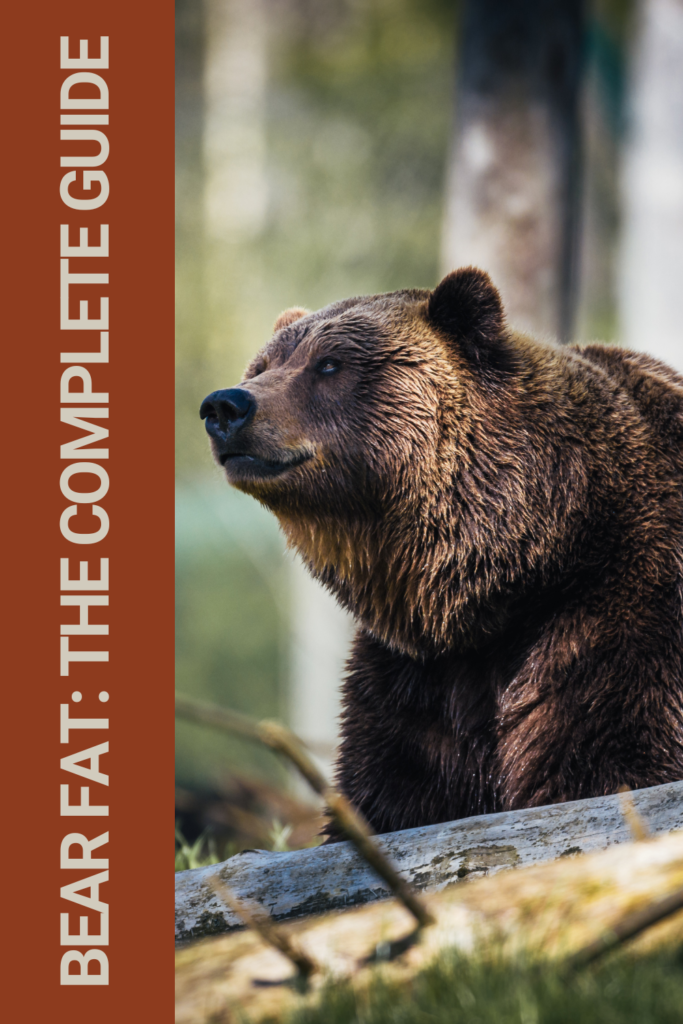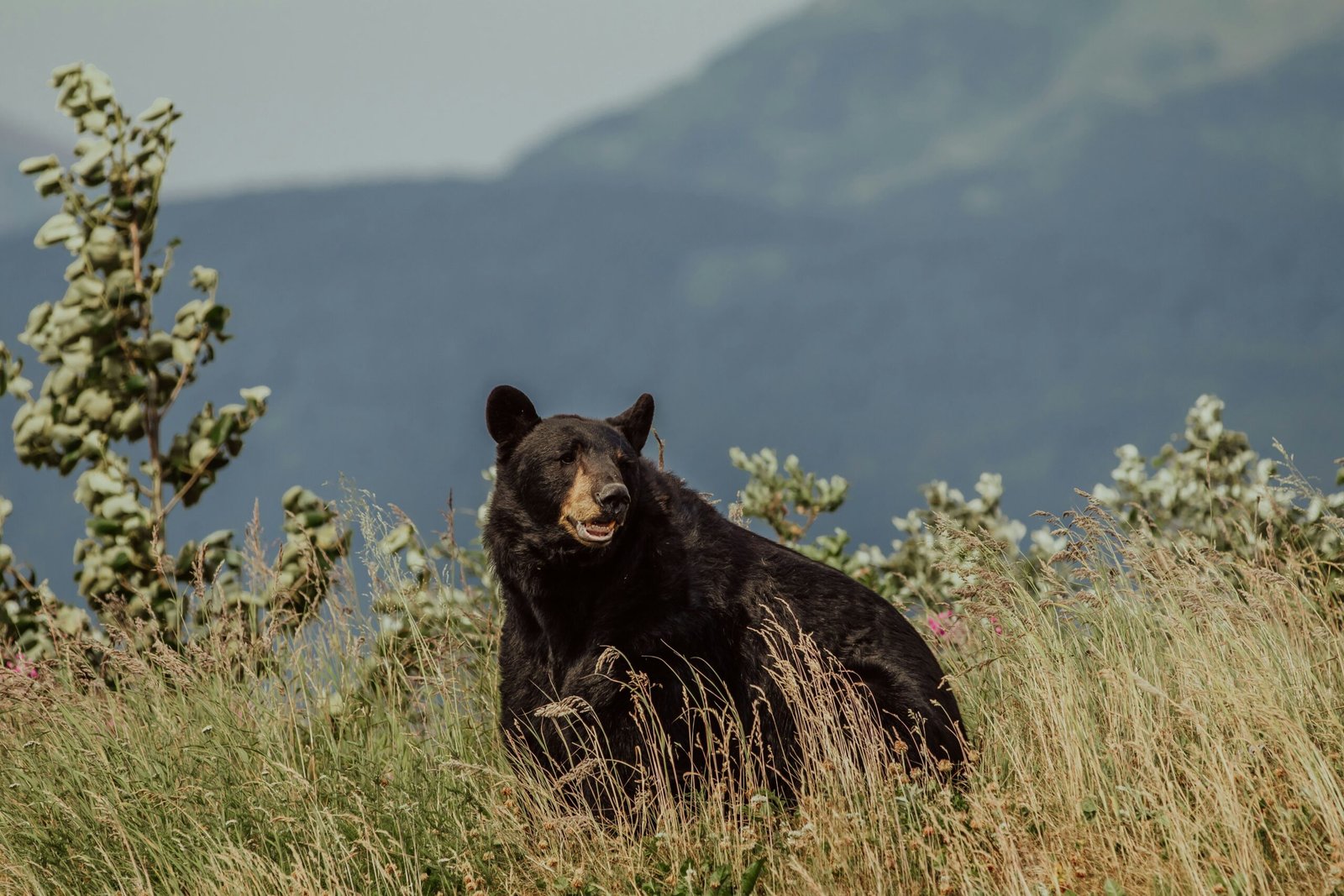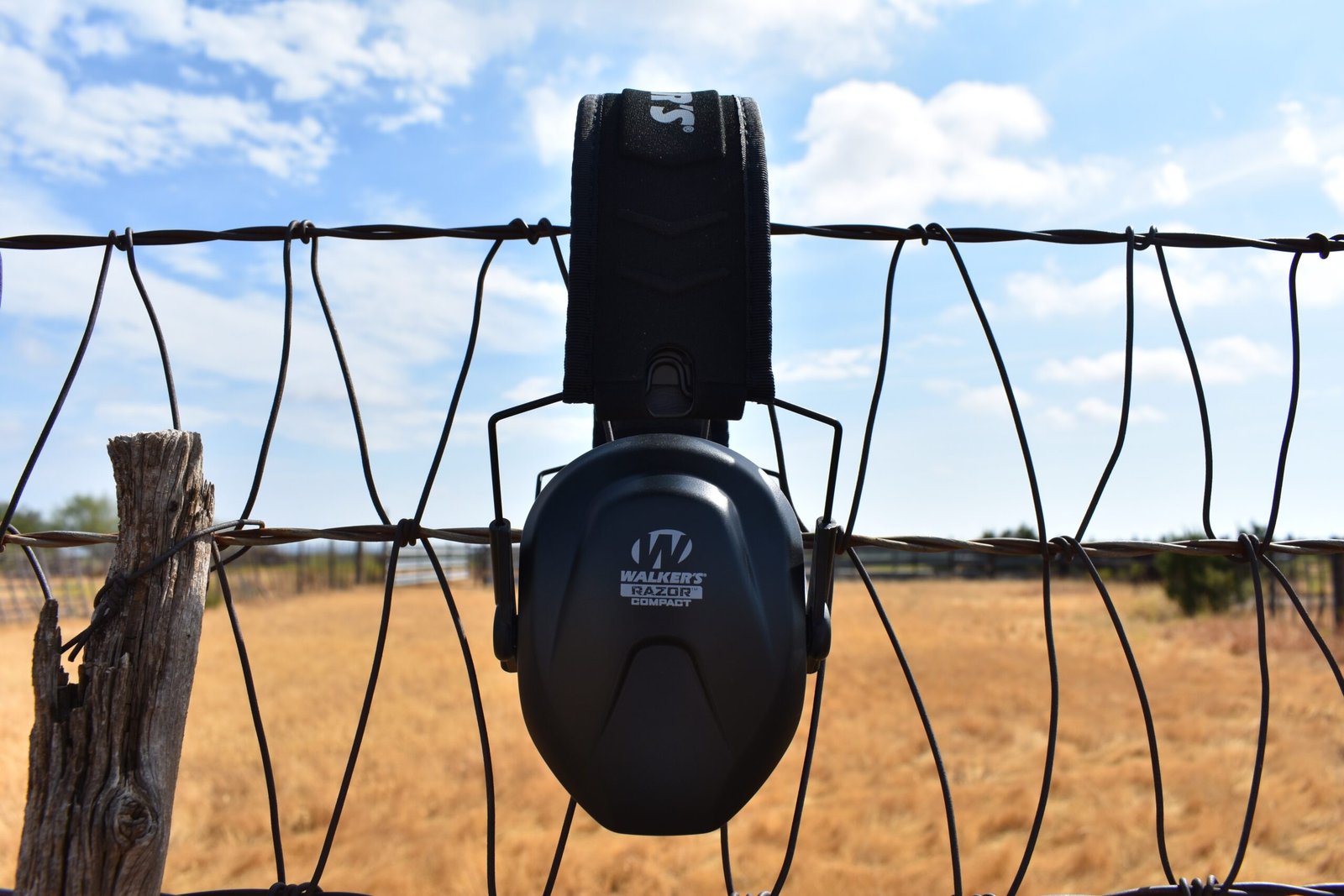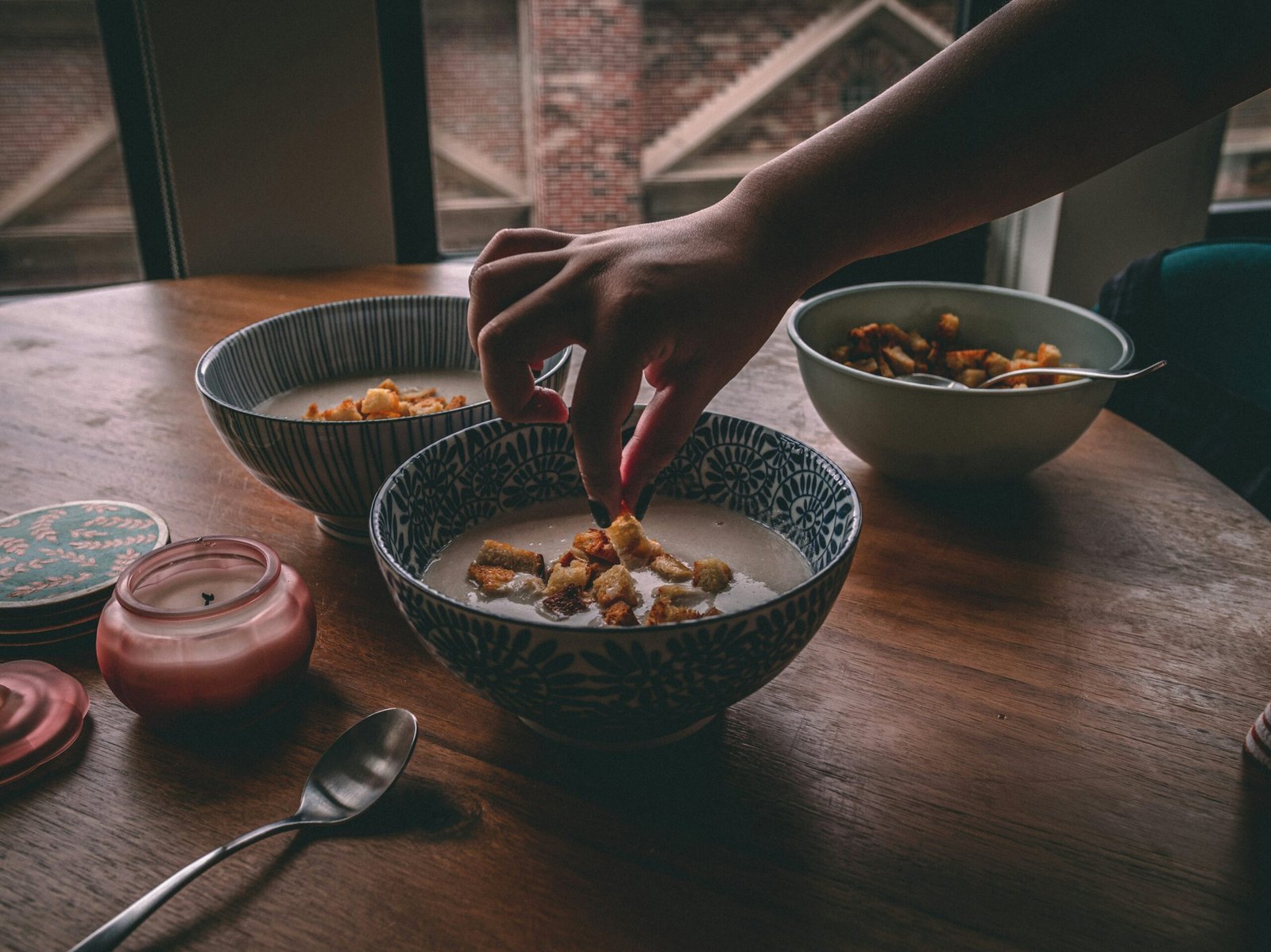Bear fat has been used for centuries by indigenous people across the globe for both culinary and medicinal purposes. In recent years, it has gained popularity among chefs, health enthusiasts, and skincare experts alike. Bear fat is rich in nutrients and is considered a healthier alternative to other cooking oils. It is also known for its moisturizing properties and is used in various skincare products.

The Science of Bear Fat
Bear fat is high in monounsaturated and polyunsaturated fats, which are considered good for heart health. It is also a rich source of vitamins A and D, which are essential for healthy skin, eyes, and bones. Moreover, bear fat contains high levels of oleic acid, which has been shown to have anti-inflammatory properties.
Culinary Uses of Bear Fat
Bear fat has a high smoke point, which makes it ideal for high-temperature cooking methods such as frying and roasting. It has a mild flavor and can be used as a substitute for butter or other cooking oils. Bear fat is also used in traditional dishes such as pemmican, a dried meat and fat mixture that was a staple of indigenous people's diets.
Download Now: Beginner's Guide to Cooking Bear Meat
Key Takeaways
- Bear fat is rich in nutrients and is considered a healthier alternative to other cooking oils.
- Bear fat is high in monounsaturated and polyunsaturated fats, which are good for heart health.
- Bear fat has a high smoke point and can be used in high-temperature cooking methods.
The Science of Bear Fat
When it comes to animal fats, bear fat is one of the most unique and nutrient-dense options. In this section, we will explore the composition and nutritional profile of bear fat, as well as its potential health benefits and concerns.
Composition and Nutritional Profile
Bear fat is primarily composed of saturated fats, which make up around 80% of its total fat content. These saturated fats are mostly made up of palmitic and stearic acid, with smaller amounts of myristic and lauric acid. Bear fat also contains small amounts of monounsaturated and polyunsaturated fats.
In terms of micronutrients, bear fat is a good source of vitamin E, which is a powerful antioxidant that helps protect against oxidative stress. It also contains small amounts of iron and other minerals.
Health Benefits and Concerns
One of the main benefits of bear fat is its high-calorie content and energy density, which can be beneficial for individuals who require a lot of energy, such as athletes or those with physically demanding jobs. Additionally, the saturated fats in bear fat may help improve strength and muscle mass.
Want more information on bear meat?
Check out Bear Meat:: How To Cook and What to Know.
However, it is important to note that consuming too much saturated fat can increase the risk of heart disease and other health issues. Therefore, it is recommended to consume bear fat in moderation and as part of a balanced diet.
There is also some evidence to suggest that consuming bear fat may help regulate blood sugar levels and improve insulin sensitivity, which could be beneficial for individuals with diabetes. However, more research is needed in this area.
Overall, bear fat is a unique and nutrient-dense option for those looking to incorporate animal fats into their diet. However, it should be consumed in moderation and as part of a balanced diet to avoid any potential health concerns.
Culinary Uses of Bear Fat
As we discussed earlier, bear fat or bear lard has been used for centuries in traditional cooking. Its unique flavor and texture make it a versatile ingredient in many recipes. In this section, we will explore some of the most popular culinary uses of bear fat.
Traditional Recipes
Bear fat has been a staple ingredient in many traditional recipes. Native American tribes used bear fat in pemmican, a high-energy food made from dried meat, berries, and fat. The Inuit people used bear fat to make akutaq, a dessert made from whipped fat and berries. In addition, bear fat has been used in many other traditional recipes, including stews, soups, and baked goods.
Modern Cooking Applications
Bear fat is also gaining popularity in modern cooking applications. Its high smoke point makes it an excellent choice for frying and sautéing. Bear fat can also be used as a substitute for oils and butter in many recipes. It adds a unique flavor and richness to dishes that cannot be achieved with other fats.
Bear fat is also a great addition to baked goods. It can be used in place of shortening or butter in pie crusts, biscuits, and other baked goods. Bear fat adds a delicious flavor and texture to these treats.
When using bear fat in cooking, it is important to keep in mind its unique properties. Bear fat is high in saturated fat, so it should be used in moderation. It is also important to balance the use of bear fat with other healthy fats, such as olive oil or avocado oil.
In conclusion, bear fat is a versatile and flavorful ingredient that can be used in many traditional and modern recipes. Its unique properties make it an excellent choice for frying, sautéing, and baking. However, it should be used in moderation and balanced with other healthy fats to ensure a balanced and nutritious diet.
Bear Fat in Self-Care
When it comes to self-care, many people are unaware of the benefits of bear fat. Bear fat, also known as bear grease, has been used for centuries in traditional medicine to treat a variety of ailments. In this section, we will explore the benefits of bear fat in self-care, specifically for skin care solutions and bear fat remedies.
Skin Care Solutions
Bear fat has been used for centuries as a skincare solution. It is rich in vitamins and minerals that are essential for healthy skin. The high concentration of vitamin E in bear fat makes it an excellent moisturizer. It can be used to treat dry, cracked skin and eczema. It is also effective in treating rashes and other skin irritations.
One way to use bear fat as a skin care solution is to make soap with it. Bear fat soap is gentle on the skin and can be used daily. It is a natural alternative to commercial soaps that are often harsh and filled with chemicals. Bear fat soap can help soothe irritated skin and leave it feeling soft and supple.
Bear Fat Remedies
Bear fat can also be used as a remedy for a variety of ailments. It has anti-inflammatory properties that make it effective in treating arthritis and other joint pain. It can also be used as a salve to treat cuts, bruises, and burns. Bear fat salve can help speed up the healing process and reduce scarring.
Another way to use bear fat as a remedy is to make bear fat milk. Bear fat milk is a traditional remedy for colds and flu. It is made by mixing bear fat with warm milk and honey. It is believed to boost the immune system and help fight off infections.
In conclusion, bear fat is a versatile and effective ingredient that can be used in a variety of self-care solutions. Whether you are looking for a natural skin care solution or a remedy for a specific ailment, bear fat has something to offer. So why not give it a try and see the benefits for yourself?
Harvesting and Rendering
The Bear Hunt
When it comes to harvesting bear fat, the first step is to go on a bear hunt. Black bears are the most common bears hunted for their fat in North America, and it is important to note that hunting regulations vary by state and province. It is essential to check local regulations and obtain the necessary licenses and permits before embarking on a bear hunt.
Hunters should also be aware of the best time to hunt black bears for their fat. The ideal time is in the fall, after the bear has had a chance to fatten up for the winter. It is also important to note that the fat content of a bear can vary depending on factors such as age, sex, and diet.
Processing Bear Fat
Once a bear has been successfully hunted, the next step is to process the fat. The fat must be removed from the bear and then rendered to extract the oil. Rendering bear fat is a simple process that involves heating the fat until it melts and separates into oil and solid residue.
There are different methods of rendering bear fat, including stovetop and oven methods. Regardless of the method used, it is important to monitor the temperature carefully to ensure that the fat does not burn or become rancid.
After the fat has been rendered, it can be stored in a cool, dry place. Bear fat has a long shelf life, and it can be used for a variety of purposes, including cooking, soap making, and skin care products.
In conclusion, harvesting and rendering bear fat requires careful planning and attention to detail. By following the proper procedures and regulations, hunters can obtain high-quality bear fat that can be used in a variety of applications.
Bear Fat in Fitness and Exercise
When it comes to fitness and exercise, incorporating bear fat into your regimen can have a variety of benefits. From aiding in muscle development to promoting recovery, bear fat can be a valuable addition to any fitness routine.
Incorporating Bear Fat in a Fitness Regimen
One way to incorporate bear fat into your fitness regimen is by using it as a cooking oil. Bear fat is a rich source of healthy fats, making it a great alternative to traditional cooking oils. Additionally, the high smoke point of bear fat makes it ideal for high-heat cooking methods such as grilling or frying.
Download Now: Beginner's Guide to Cooking Bear Meat
Another way to incorporate bear fat into your fitness routine is by using it as a topical ointment. Bear fat has been used for centuries as a natural remedy for sore muscles and joints. Applying bear fat to the affected area can help to alleviate pain and promote healing.
Recovery and Muscle Development
Bear fat can also aid in recovery and muscle development. The healthy fats found in bear fat can help to reduce inflammation and promote healing, making it an ideal addition to any recovery regimen.
In terms of muscle development, bear fat is a rich source of protein and amino acids. These nutrients are essential for muscle growth and repair, making bear fat a valuable addition to any muscle-building diet.
Overall, incorporating bear fat into your fitness and exercise routine can have a variety of benefits. Whether you're looking to promote muscle development or aid in recovery, bear fat is a valuable tool to have in your arsenal.
Frequently Asked Questions
What are the health benefits of consuming bear fat?
Bear fat is a rich source of vitamin A, D, and E, and contains high amounts of monounsaturated and polyunsaturated fatty acids, which are beneficial for heart health. It also has anti-inflammatory properties and can help improve insulin sensitivity.
How can bear fat be used in cooking and what does it taste like?
Bear fat can be used in place of other cooking oils and fats, and has a mild, slightly sweet flavor. It is especially good for frying and roasting, as it has a high smoke point and can withstand high temperatures without burning.
What are some popular recipes that incorporate bear fat?
Bear fat is commonly used in traditional dishes such as pemmican, a high-energy food made from dried meat and berries. It can also be used in modern recipes such as roasted vegetables, fried chicken, and baked goods like pie crusts.
Can bear fat be used for hair and skin care, and if so, how?
Yes, bear fat can be used for hair and skin care. It is rich in moisturizing properties and can help soothe dry, irritated skin. It can also be used as a conditioning treatment for hair, leaving it soft and shiny.
What are the best practices for storing rendered bear fat to prevent it from going rancid?
To prevent bear fat from going rancid, it should be stored in an airtight container in a cool, dark place. It can also be frozen for long-term storage.
Are there any unique or traditional uses of bear fat worth knowing about?
Bear fat has been traditionally used by indigenous peoples for medicinal purposes, such as treating burns and wounds. It has also been used as a lubricant for firearms and as a waterproofing agent for clothing and tents.





One thought on “Bear Fat: The Complete Guide”